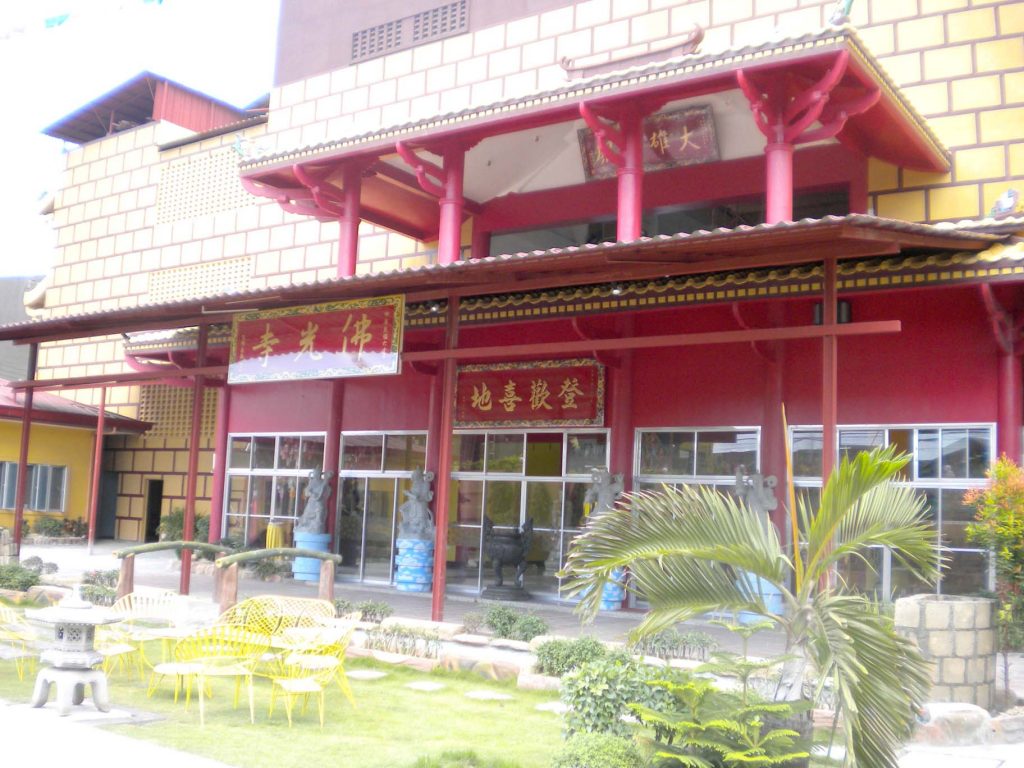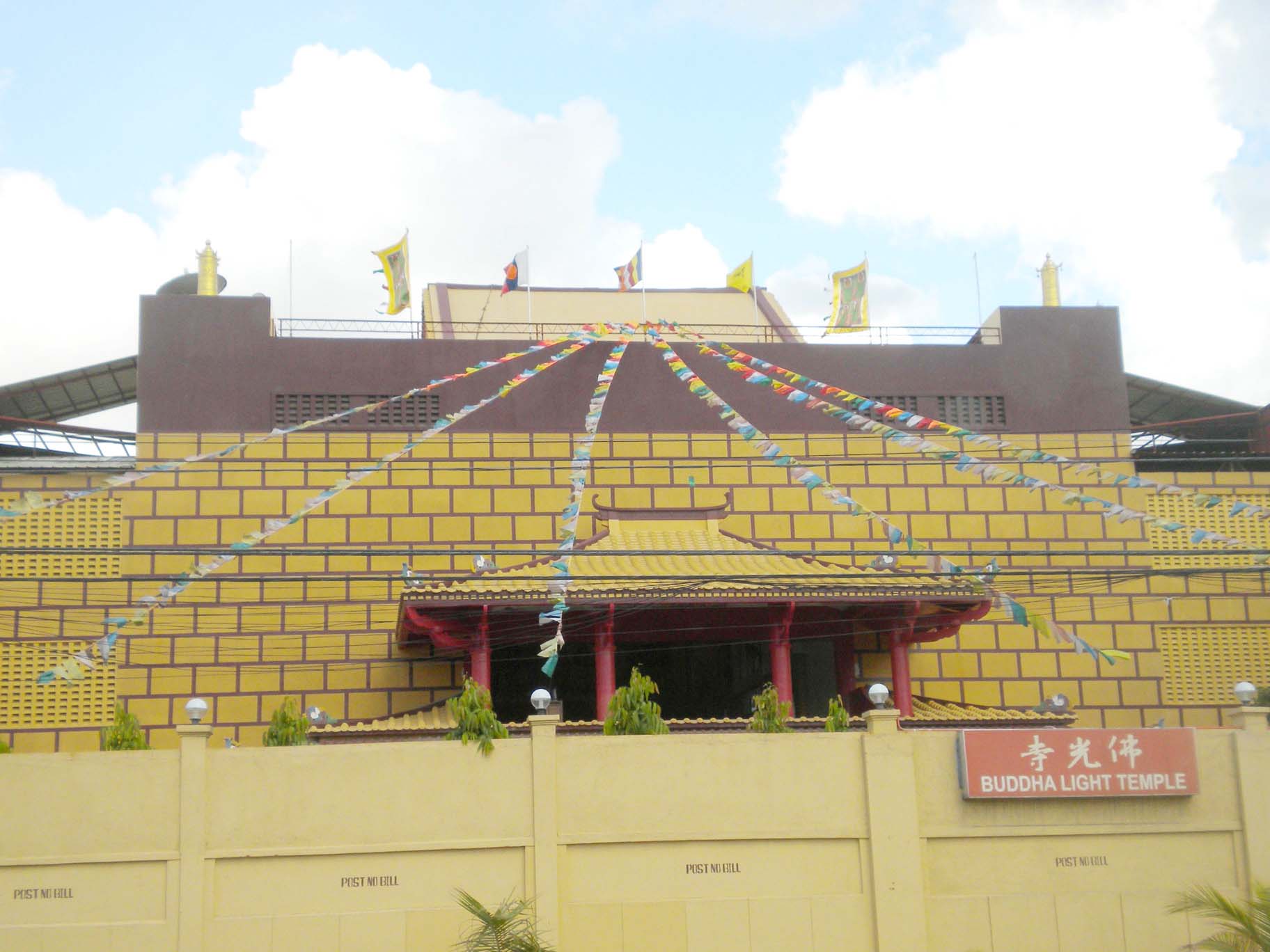Editors Note: This is the 29th of a series about the 36 Chinese Buddhist temples of the Philippines. Much of the information is from a thesis of Venerable Chuanmiao (Hsuan Chuang University, 2008), a Buddhist monk affiliated with the Thousand Buddha Temple in Quezon City.
29. Buddha Light Temple 佛光寺
Benedicto St., North Reclamation Area, Cebu City
Tel.: (032) 233-1884 • 233-5416
This temple was founded by Ven. Shanqi (善契), who came to the Philippines with Ven. Ruijin (瑞今) of Seng Guan Temple (信願寺) in 1946, upon the invitation of Xingyuan (性願). He served at Seng Guan and Hwa Chong temples, often as one of the three assistants to the abbot. In 1962, he was invited by contacts in Cebu to start a new temple there.
He began with a small center called the Xiang Guang Lianshe (香光蓮社), until he was able to purchase property and build the Buddha Light Temple, inaugurated in 1968. Shanqi died in 1974, and subsequently some monks came to stay for short periods. Eventually, the temple fell to disrepair.
In 1997, Zhengzhe (正哲) of Chong Hoc Temple (崇福寺) in Pasay, a disciple of Shanqi’s Dharma brother back in Fujian, took responsibility for the temple and sent his own disciples to staff the temple.
That same year, one of Zhengzhe’s lay disciples from Hong Kong visited the temple and made a vow that if he ever became a monk, he would return to Cebu and improve the temple’s condition.
That disciple later became a monk under Zhengzhe, and also began practicing esoteric Buddhism, where he was recognized as a Living Buddha. Known as Bannuo Rinpoche (班諾•仁波切), he has attracted many young disciples. He did not forget his vow, and in 2010 began major refurbishment of Buddha Light Temple. He has introduced the iconography of esoteric Buddhism to the temple, but retained the older statues of Chinese Buddhism to respect the temple’s origins.

Main buildings. The temple’s second floor main shrine to the three Buddhas used to face the road on 6th Avenue, but Bannuo changed this orientation and relocated the Buddha images to the other end of the hall, facing the temple’s back door on Benedicto Street. This way, the three Buddha images face the sea to the eastern direction.
A small garden fronts the temple, and by the gate a small shrine to the territorial god Tudigong (土地公) has been erected.
The worship hall on the ground floor is air-conditioned, and several statues have been added to the original three of the bodhisattvas Guanyin, Manjusri, and Samanthabhadra.
The new additions – seven Buddhas of the Eastern Universe presided over by the Medicine Buddha – are placed in front of the bodhisattva statues.
The 18 lohan (羅漢) of Chinese Buddhism are on the side walls. By the main entrance are paintings of the esoteric depictions of Maitreya and Manjusri.
Ancestral chapels on the ground floor have also been renovated, and more modern, plastic spirit tablets are already in use. Niches for interring ashes are also in place.
Leadership and primary activities. Bannuo has more than 10 young monks assisting him, and more are expected to come. While some iconography from esoteric Buddhism has been introduced, he says the temple’s practice will continue to follow Chinese Buddhism. There are services every weekend and all Buddhist feast days are observed with chanting services.
Bannuo is keen to engage in charitable activities and has already organized the distribution of goods to the poor of the neighborhood. — First published in Tulay Fortnightly, Chinese-Filipino Digest 26, no. 1-2 (June 18-July 8, 2013): 26.
